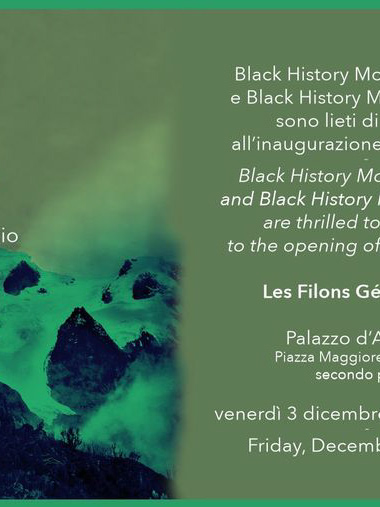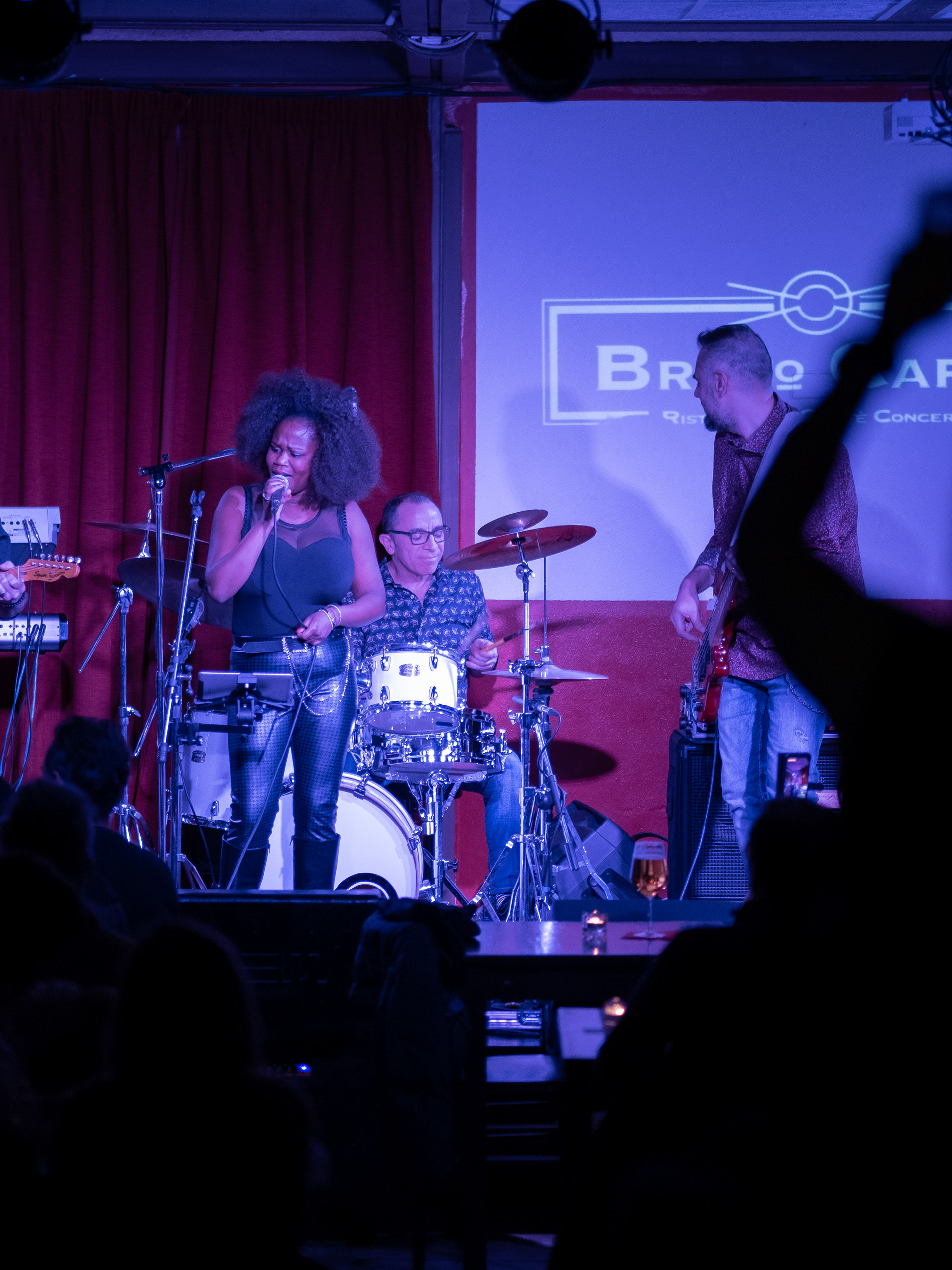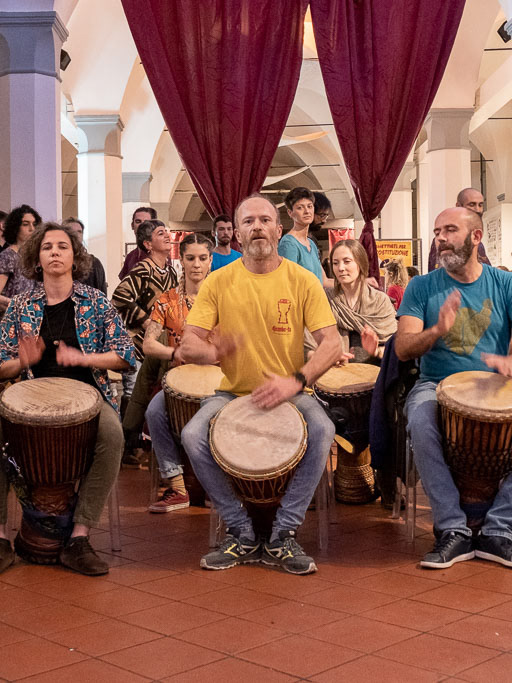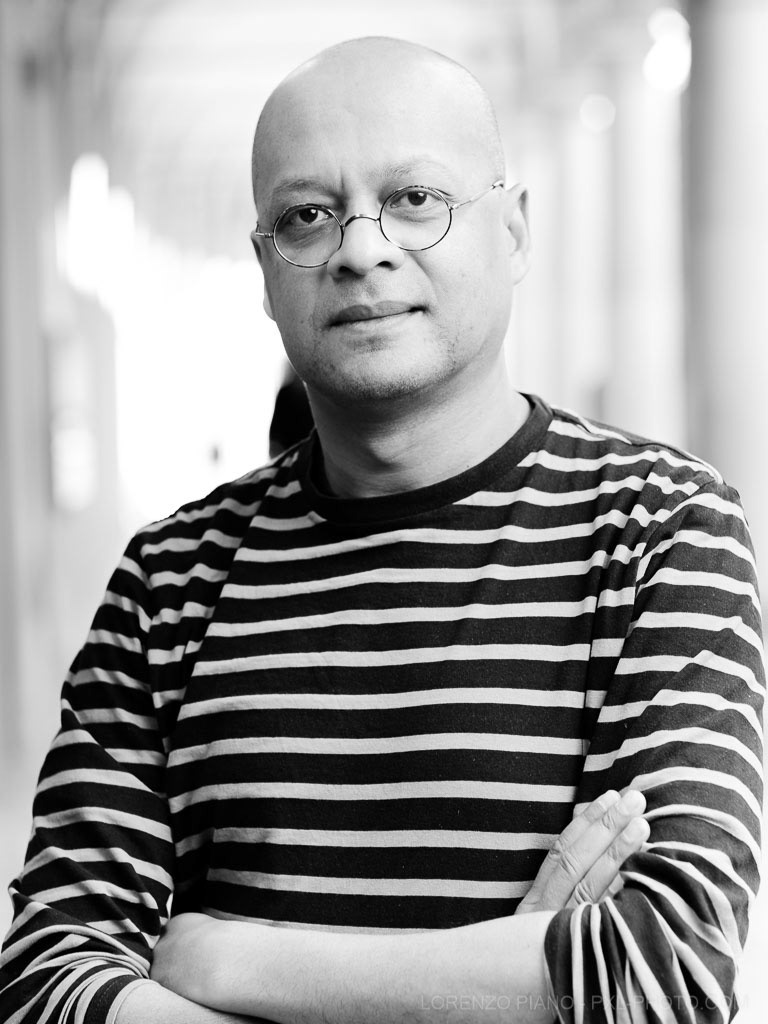Infinito/Materialità I - Aula Teatro ABABO - Scenografia per la sfilata MM Fashion
Infinito/Materialità II - Aula Caccioni ABABO - Dialogo poetico/installazione
"L’infinito/Materialità"
incontro poetico con HYACINTHE OUATTARA
"L'infinito / Materialità" è una riflessione attorno al materiale tessile come elemento di circolazione che traccia impronte del presente, interiore e del mondo futuro. Una conversazione poetica con il nostro spazio-tempo e fisico, con la sua complessità, la sua ambivalenza. Come possiamo materializzare il passare del tempo creando immaginazioni legate ai nostri impulsi provenienti dall'interno. Il tessuto con la sua carica emotiva verrà utilizzato come vettore che collega un punto all'altro collegando diversi poli, la poesia del collegamento e organicità. Metteremo anche in discussione, equilibrio, squilibrio e la sospensione di un'opera nello spazio.
The Infinite/Materiality
poetic encounter with HYACINTHE OUATTARA
A reflection around the materiality of textiles as an element of circulation that underlines the imprints of the world and the present time, of an inner world and the future. A sort of poetic conversation with our space-time and physicality engaging its complexity, its ambivalence.
How can we materialize the passing time by creating imaginaries connected to the impulses coming from within...
Textiles through their emotional charge are like a vectors that connects one point to another, various poles, the poetry of the bond and the infinite circulatory movement.
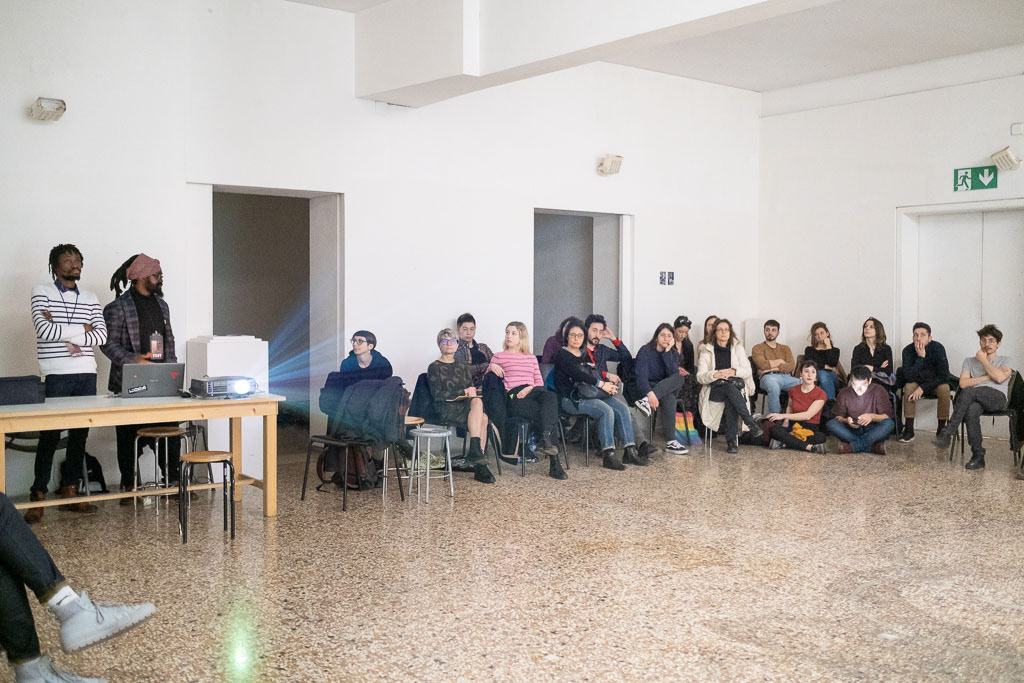
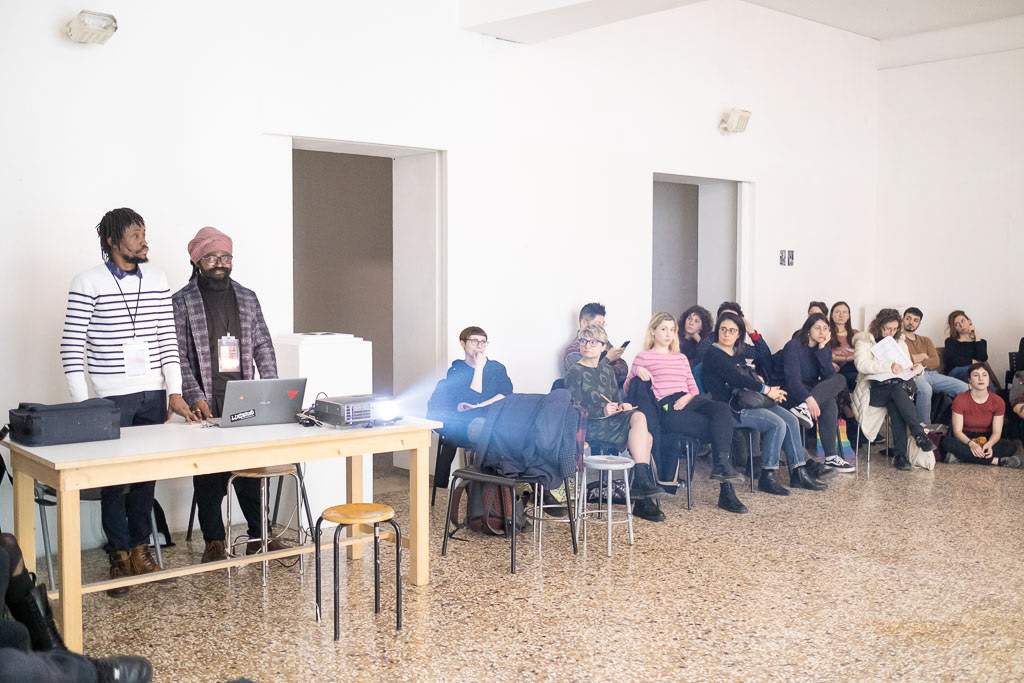
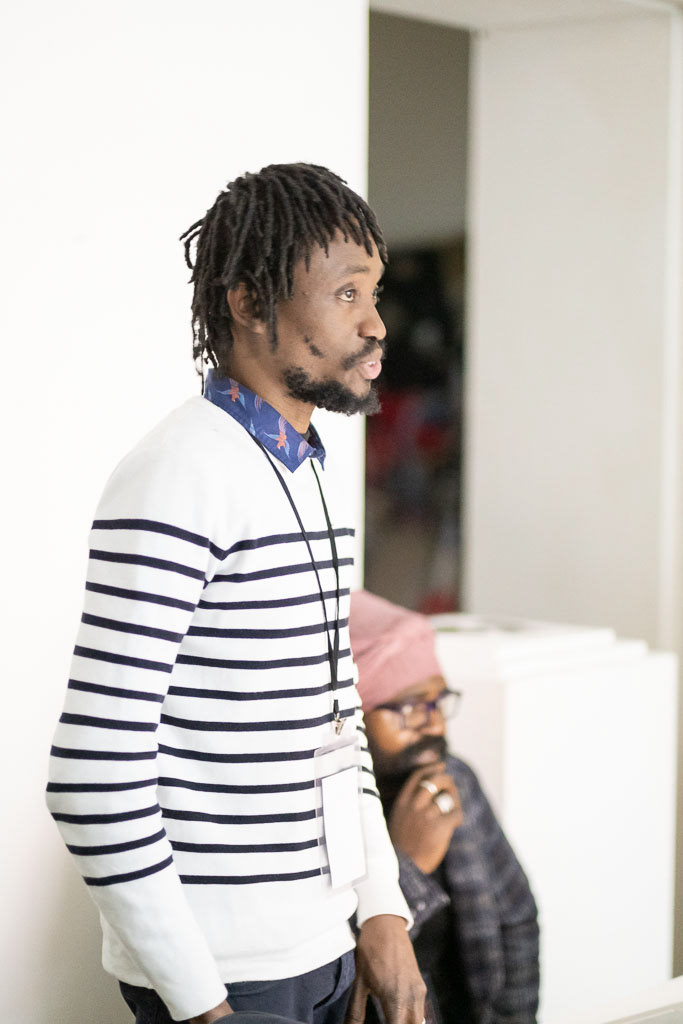
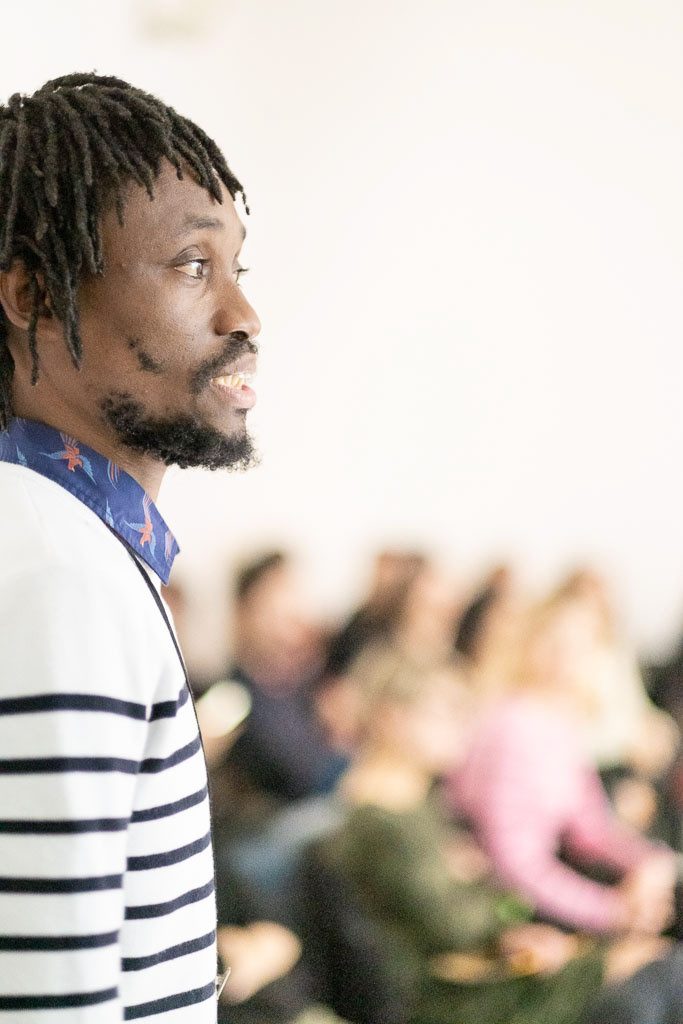

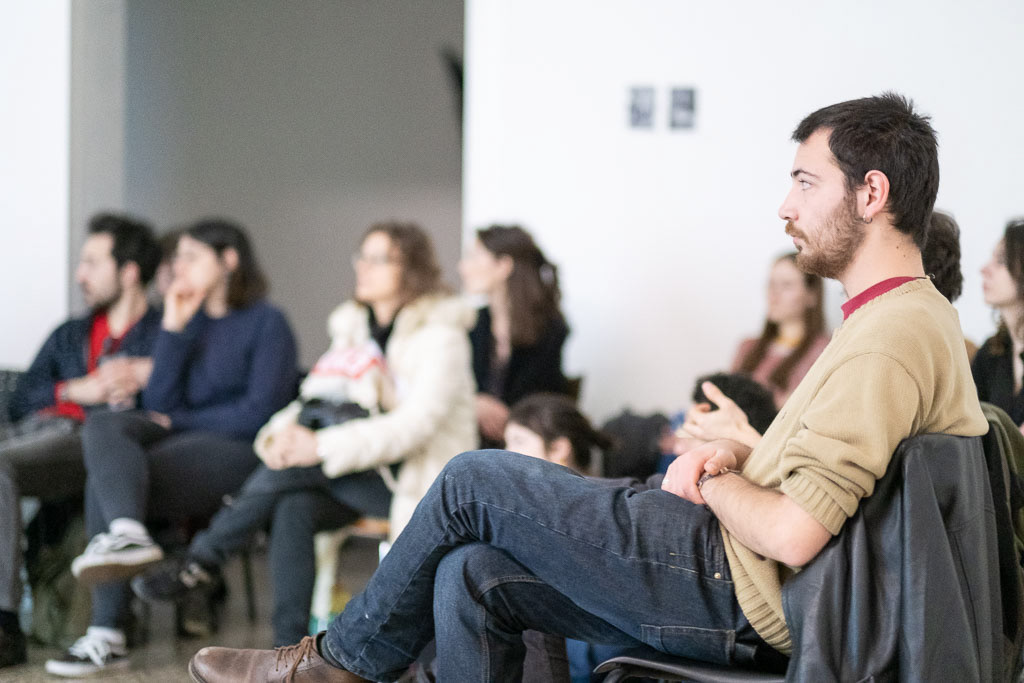
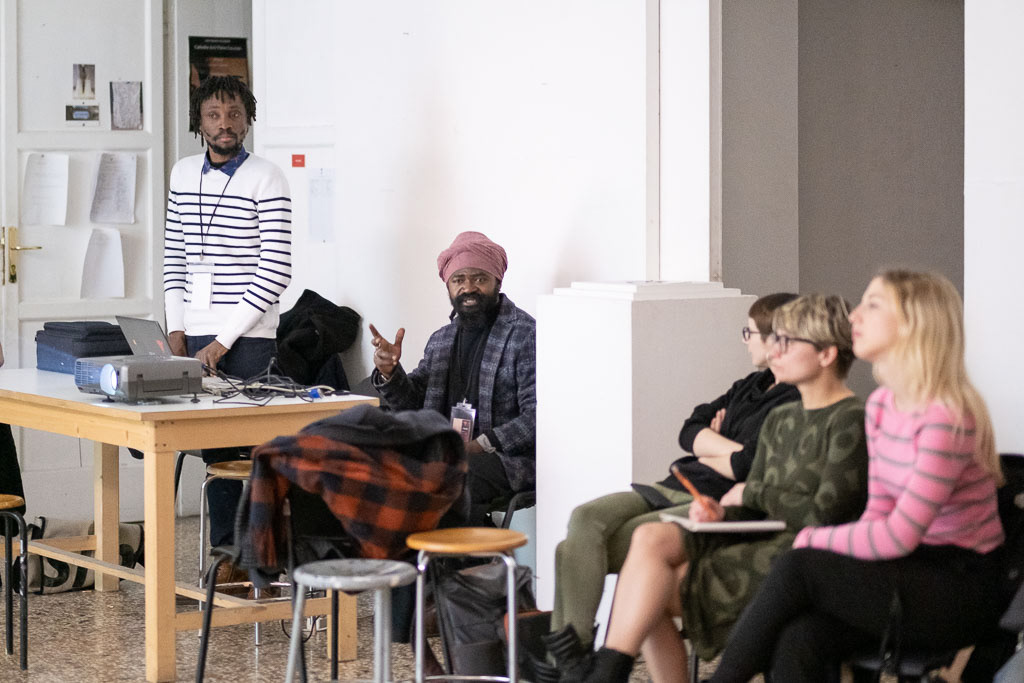
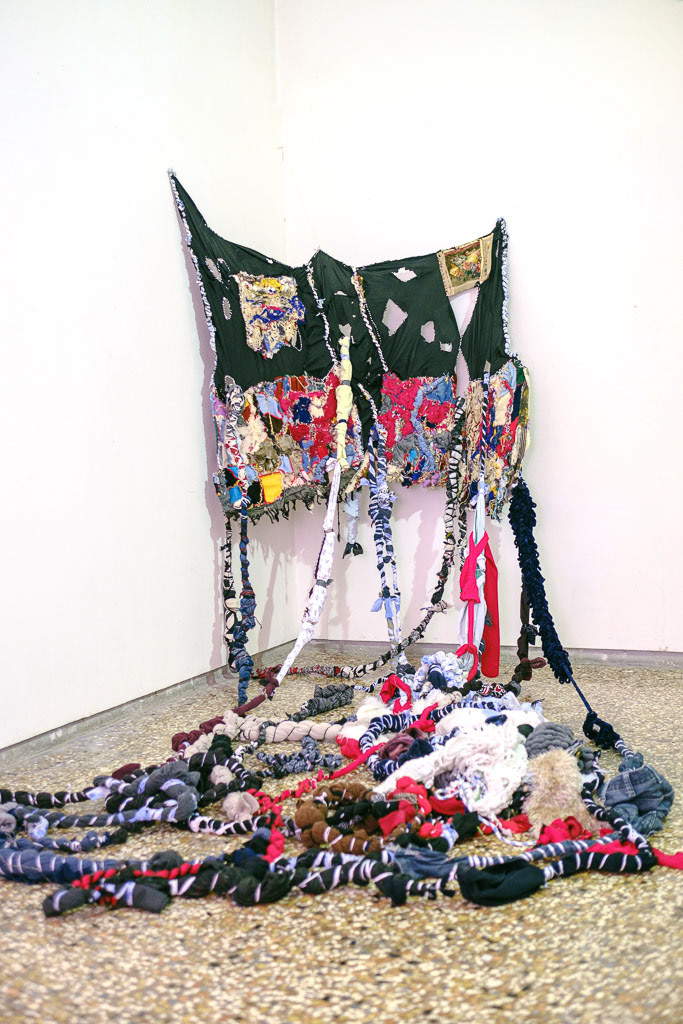
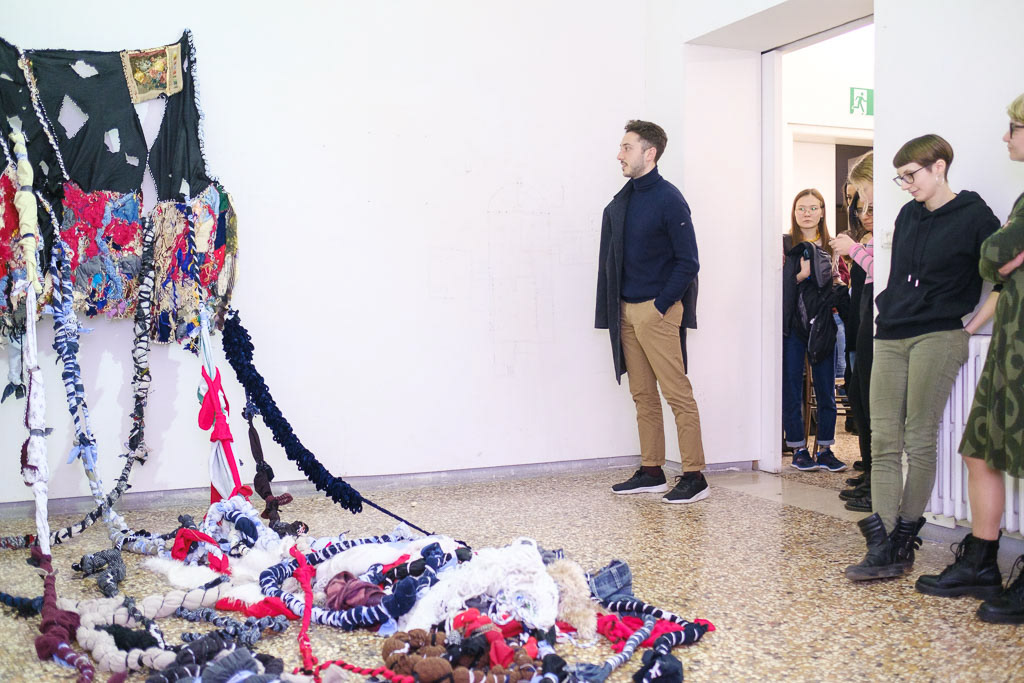

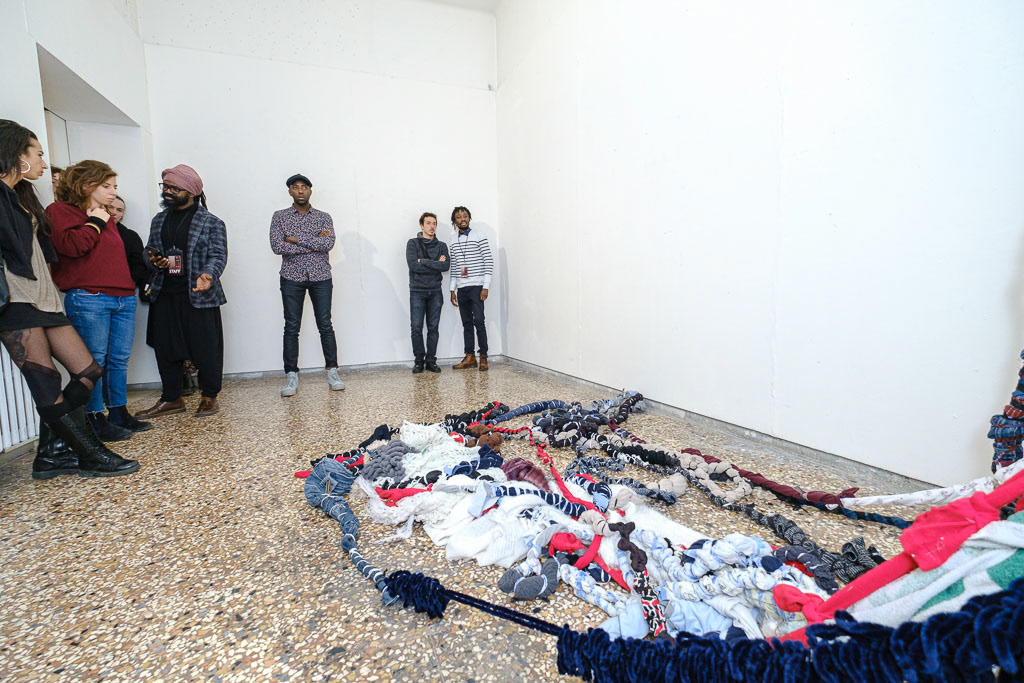
(ITA) Hyacinthe Ouattara - Infinito Materialità
l 17 febbraio scorso, nell’ambito degli eventi BHMBo, marcando l’inaugurazione della prima edizione dell’iniziativa Black History Month Bologna, L’accademia delle Belle arti è stato lo scenario che ha accolto l’incontro poetico dell’artista Burkinabe Hyacinthe Ouattara con il progetto didattico L’infinito/Materialità, una specie di dialogo con la materia e lo spazio infinito, frutto di anni di ricerca che l’artista ha voluto condividere con gli studenti dell’Accademia sotto la supervisione del Prof Lucca Caccioni che ha voluto ospitarci nel quadro dei seminari didattici di cui ho buona memoria per averci preso parte durante il mio percorso formativo.
Un dialogo, condotto dall’artista, in cui abbiamo potuto seguire l’evoluzione della sua poetica, dalla sua genesi in Burkina Faso con l’opera “France Aurevoir”- 2010, in cui l’artista denunciava il rapporto neo-coloniale che persiste tra il suo paese e la Francia con un installazione pubblica fatta in un mercatino della Capitale con stoffe, vestiti e pezze usate raccolte in Francia e spedite in Africa molto spesso, eppure l’Africa produce cottone e tessuto, questo paternalismo perenne che si nasconde dietro ad un assistenzialismo interessato.
Ad un certo punto l’artista ci racconta del suo arrivo a Parigi tra avversità culturali e ristrettezza dello “spazio-abitazione” si chiedeva come esprimersi in queste condizioni per essere più conciso come abitare la Francia con la mia arte? Questa Francia che lo abitava nei suoi sogni la sua lingua ed il suo modo di pensare, ed è allora che l’osservazione dell’andirivieni della gente a Parigi nei supermercati, le strade, le piazze senza salutare molto spesso, ma l’incrocio degli sguardi accusatori o semplicemente curiosi o giudicanti lo riporta nell’atelier di sua madre dove da bambino le prime forme di disegno che vide nascere erano sulle federe o lenzuola realizzate da lei per la gente del paese. Da quel momento, diventa chiaro per l’artista che il suo laboratorio è lo spazio ed essendo infinito, sia interno che esterno, poco a poco comincia a popolarsi di comparse, la gente che va e viene, le interferenze delle possibili tracce lasciate dal loro percorso ripetuto o no, le loro impronte nello spazio, il segno delle loro voci e l’inquinamento che ne deriva. Stoffa dopo stoffa, filo dopo filo contorce, assembla, annoda e talvolta sospende assecondando le sue pulsioni interiori tali ad un trombettista che esegue un pezzo di Jazz che spezz, intreccia, sconnette e conclude, il ritmo è la sola impronta possibile.
Evolvendo nella nostra “causerie” l’artista ci racconta della scoperta che orientò la sua poetica del tessile a Parigi: “La funzione del vestito”; Il vestito copre, vela, nasconde ciò che deve nascondere ed allo stesso tempo mostra forse quello che vogliamo nascondere, qui sembra che siamo su un palcoscenico in cui ognuno riveste un ruolo. Se il vestirsi ci permette di coprire la nostra nudità fisica, tanto il nostro mondo interiore in un certo senso cerca di esprimersi e trova a volte lo stile le tonalità il colore per farlo e dunque Hyacinthe ci invita ancora ad esplorare la complessità e l’ambivalenza della materia con il tessile.
Questa ambivalenza viene anche rivalutata attraverso il tema guida di questa prima edizione del Black History Month Bologna. Come edizione pilota con il tema "Obliggato" abbiamo voluto insistere su un invito a soddisfare gli obblighi sociali che ci collegano tutti indiscriminatamente l'uno verso l'altro nel senso più ampio, l'affermazione nella razza umana intrinseca alla stessa natura umana. Questa proposta artistica ha immerso i nostri sensi non solo al livello discorsivo di cui l'incontro con l'artista ha catturato l'essenza, ma gli aspetti visivi ci hanno anche impegnato a esplorare una dimensione materiale attraverso la presentazione di un'installazione risultante da una performance precedente.
Quest'opera faceva parte di una scenografia per la sfilata ispirata ai designer africani tenutasi all'Aula Teatro lo scorso febbraio dal titolo The Infinite / Materiality I ”successivamente ad Aula Caccioni una trasmutazione dell'operain un'installazione chiamata "L'infinito materialità II" che suggerisce il lavoro dell'artista come una certa evoluzione o atto circolatorio. D'altra parte, le trecce, i nodi e le cravatte che a volte richiamano l'apparato digerente o circolatorio, in questo lavoro ci ricordano la complessità di questi sistemi che compongono il nostro organismo, contribuiscono al suo funzionamento e alla sua unità, invitandoci a considerare l'esistenza di infinite possibilità di narrazioni. Questo suggerisce l'uso del termine Obbligato da parte del jazz che favorisce l'emergere di una narrativa collettiva, consapevole della ricchezza di melodie / narrazioni precedenti che sono di pari importanza.Alla luce dell'attuale situazione sanitaria globale, come direttore artistico del Black History Month Bologna ho ceduto alla tentazione di stabilire un parallelo tra questa produzione artistica e la stessa pandemia.
Molto spesso gli artisti, attraverso le loro opere, anticipano la realtà per lunghi periodi di tempo se non provano a crearla da soli.Covid 19 non si occupa di confini territoriali, conforto, titoli amministrativi, status quo, razza o potenze economiche mondiali, anzi alcuni paesi apparentemente "più semplici" stanno facendo meglio di quelli con sovrastrutture specializzate e significa che alla luce di tutto ciò sono dimostrandosi inefficace. Come possiamo superare l'impotenza tecnologica chiaramente esposta da questo essere composto da pochi micron in solitudine? Con individualismo? Nel protezionismo? Nel nazionalismo radicalizzato? Quando impareremo che un singolo ramo è più fragile di più rami messi insieme? O che un nodo è più resistente di una spaccatura? Ci vogliono molti fiumi per creare un oceano! Forse questa è l'intenzione più significativa che dovremo considerare alla fine di questa esperienza unica sia a livello artistico che per quanto riguarda la salute globale. Mai più di prima sentiremo l'urgenza di concordare sulla necessità di costruire una società organica che non si concentri solo sull'essere umano, ma anche e soprattutto sulla vita, perché l'universo è fatto di particelle viventi e tutto ciò che è vivo è degno della nostra attenzione e cura.
Introduzione e traduzione dal francese a cura di Patrick Joel Tatcheda
(ENG) Hyacinthe Ouattara - Infinito Materialità
On 17 February last, as part of the events marking the inauguration of the first edition of the Black History Month Bologna, the Accademia delle Belle Arti was the setting for a poetic meeting with the Burkinabe artist Hyacinthe Ouattara for a didactic project.
The Infinite/Materiality, a kind of dialogue with matter and infinite space, the result of years of research that the artist wanted to share with the students of the Accademia under the supervision of Prof. Lucca Caccioni who hosted the project in the framework of the didactic seminars that I personally have fond memories of having taken part in them during my formative path.
The Infinite/Materiality, a kind of dialogue with matter and infinite space, the result of years of research that the artist wanted to share with the students of the Accademia under the supervision of Prof. Lucca Caccioni who hosted the project in the framework of the didactic seminars that I personally have fond memories of having taken part in them during my formative path.
A dialogue led by the artist in which we were able to follow the evolution of his poetics, from a genesis in Burkina Faso with the work "France Aurevoir", 2010, in which the artist denounced the neo-colonial relationship that persists between his country and France with a public installation made in a market in the country’s capital with used fabrics, clothes and pieces of cloth which are systematically collected in France and sent to Africa. This is despite the fact that Africa produces cotton and fabric, hence representing a perennial paternalism that hides behind an interest in assistance.
At one point, the artist told us about his arrival in Paris amid cultural adversities and the narrowness of "living space", wondering how to express himself in these conditions and interested in being more concise about how to inhabit France with his art? This France that inhabited him through his dreams, his language and his way of thinking became a reflection that led to the observation of the comings and goings of the people in Paris in the supermarkets, the streets, the squares frequently without exchanging hellos or goodbyes, the intersection of the accusing, judging or simply curious looks brought him back to his mother's atelier where as a child the first forms of drawing he saw born were on pillowcases or sheets made by his mother for the people of the country. From that moment on, it becomes clear to the artist that his studio is space itself, and being infinite both inside and outside, little by little Hyacinthe's space began to be populated with extras, people coming and going, the interference of the possible traces left by their repeated or unrepeated paths, their footprints in space, the sound of their voices and the resulting pollution... Cloth after cloth he twists and twists assembling knots, suspending, following his inner impulses like a trumpeter who performs a piece of Jazz that breaks up intertwined disconnects then concludes, the rhythm is the only possible imprint.
Evolving in our "causerie" the artist told us about the discovery that oriented his poetics inviting him to cement himself in the manipulation of textiles in Paris: "The function of the clothing"; Clothing covers, sails, hides what it must hide and at the same time shows perhaps what we want to hide, it can seem like we are on a stage where everyone plays a role. If dressing ourselves allows us to cover up our physical nudity, in the meantime our inner world in a certain sense tries to express itself and sometimes elaborates our style, the colors do so and therefore Hyacinthe invites us, even further, to explore the complexity and ambivalence of our relationship with textiles.
This ambivalence is also re-evaluated through the guiding theme of this first edition of Black History Month Bologna. As a pilot edition with the theme "Obliggato" we wanted to insist on an invitation to fullfill the social obligations that link us all indiscriminately towards each other in the broadest sense, the assertion in the human race intrinsic to human nature itself. This artistic proposal has immersed our senses not only at the discursive level of which the meeting with the artist has captured the essence of, the visual aspects have also engaged us to explore a material dimension through the presentation of an installation resulting from a previous performance.
This work was part a set design for the fashion show inspired by African Designers held in the Aula Teatro last February entitled The Infinite / Materiality I” successively in Aula Caccioni a transmutation of the work
in an installation called "L'infinito materialità II" which suggests the artist’s work as a certain evolution or circulatory act. On the other hand, the braiding, the knots and ties that sometimes recall the digestive or the circulatory apparatus, in this work remind us of the complexity of these systems that make up our organism, contribute to its functioning and its unity, inviting us to consider the existence of infinite possibilities of narratives. This suggestive of jazz’s use of the term Obbligato that favoring the emergence of a collective narrative, aware of the richness of previous melodies/narratives that are equal importance.
In view of the current global health situation we are experiencing, as artistic director of Black History Month Bologna I have given in to a temptation to establish a parallel between this artistic production and the pandemic itself.
in an installation called "L'infinito materialità II" which suggests the artist’s work as a certain evolution or circulatory act. On the other hand, the braiding, the knots and ties that sometimes recall the digestive or the circulatory apparatus, in this work remind us of the complexity of these systems that make up our organism, contribute to its functioning and its unity, inviting us to consider the existence of infinite possibilities of narratives. This suggestive of jazz’s use of the term Obbligato that favoring the emergence of a collective narrative, aware of the richness of previous melodies/narratives that are equal importance.
In view of the current global health situation we are experiencing, as artistic director of Black History Month Bologna I have given in to a temptation to establish a parallel between this artistic production and the pandemic itself.
Very often artists, through their works, anticipate reality by extensive periods of time if they do not try to create it themselves.
Covid 19 does not concern itself with territorial borders, comfort, administrative titles, the status quo, race or world economic powers, indeed some seemingly “simpler” countries are doing better than those with specialized superstructures and means that in the light of all this are proving ineffective. How can we manage to overcome the technological impotence clearly exposed by this being composed of just a few microns in solitude? With individualism? In protectionism? In radicalized nationalism? When will we learn that a single branch is more fragile than several branches put together? Or that a knot is more resistant than a split? It takes many rivers to make an ocean! Perhaps this is the most significant intent that we will need to consider at the end of this unique experience both on the artistic level and in regards to the global health. Never more than before will we feel the urgency of agreeing on the need to build an organic society that is not only focused on the human being, but also and above all on life, because the universe is made of living particles and everything that is alive is worthy of our attention and care.
Covid 19 does not concern itself with territorial borders, comfort, administrative titles, the status quo, race or world economic powers, indeed some seemingly “simpler” countries are doing better than those with specialized superstructures and means that in the light of all this are proving ineffective. How can we manage to overcome the technological impotence clearly exposed by this being composed of just a few microns in solitude? With individualism? In protectionism? In radicalized nationalism? When will we learn that a single branch is more fragile than several branches put together? Or that a knot is more resistant than a split? It takes many rivers to make an ocean! Perhaps this is the most significant intent that we will need to consider at the end of this unique experience both on the artistic level and in regards to the global health. Never more than before will we feel the urgency of agreeing on the need to build an organic society that is not only focused on the human being, but also and above all on life, because the universe is made of living particles and everything that is alive is worthy of our attention and care.
Translation to english by Justin Randolph Thomson
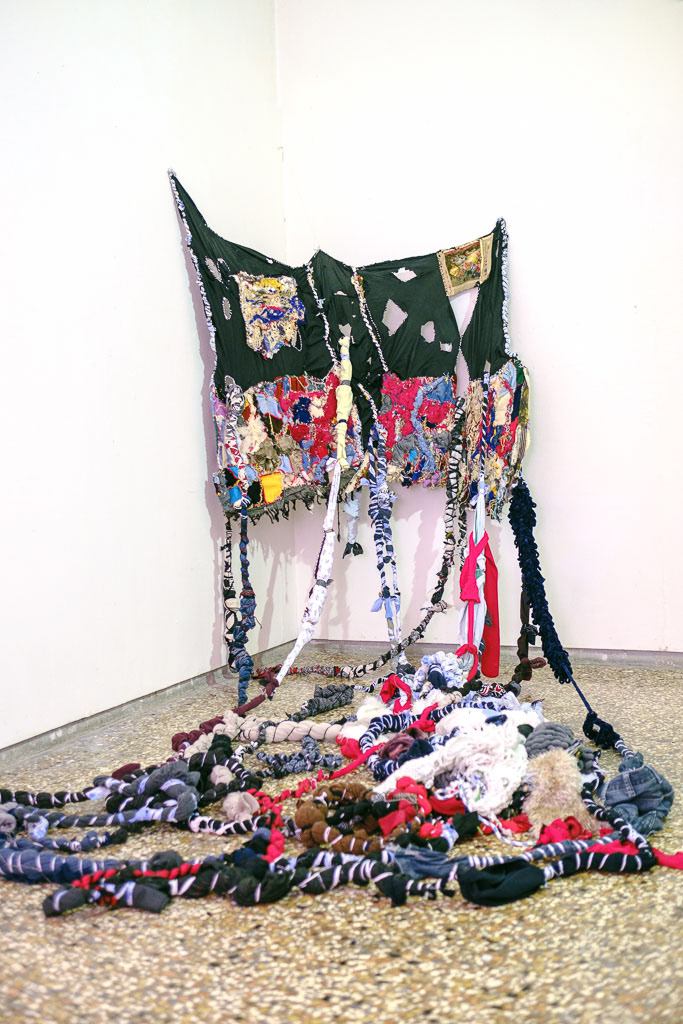
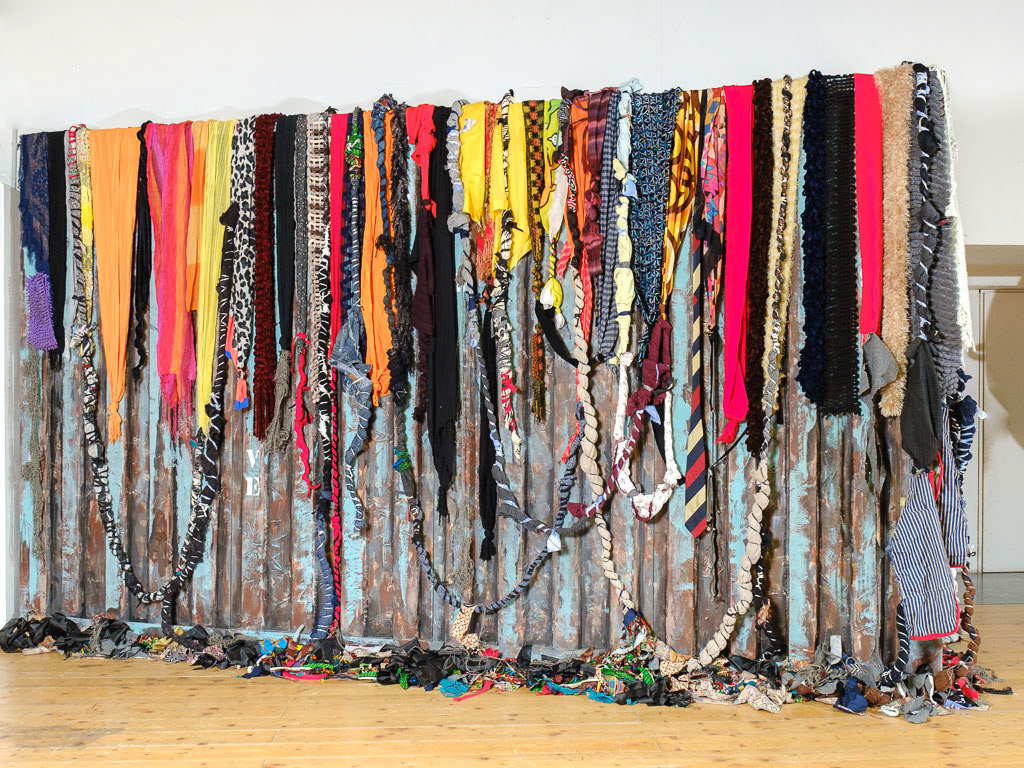
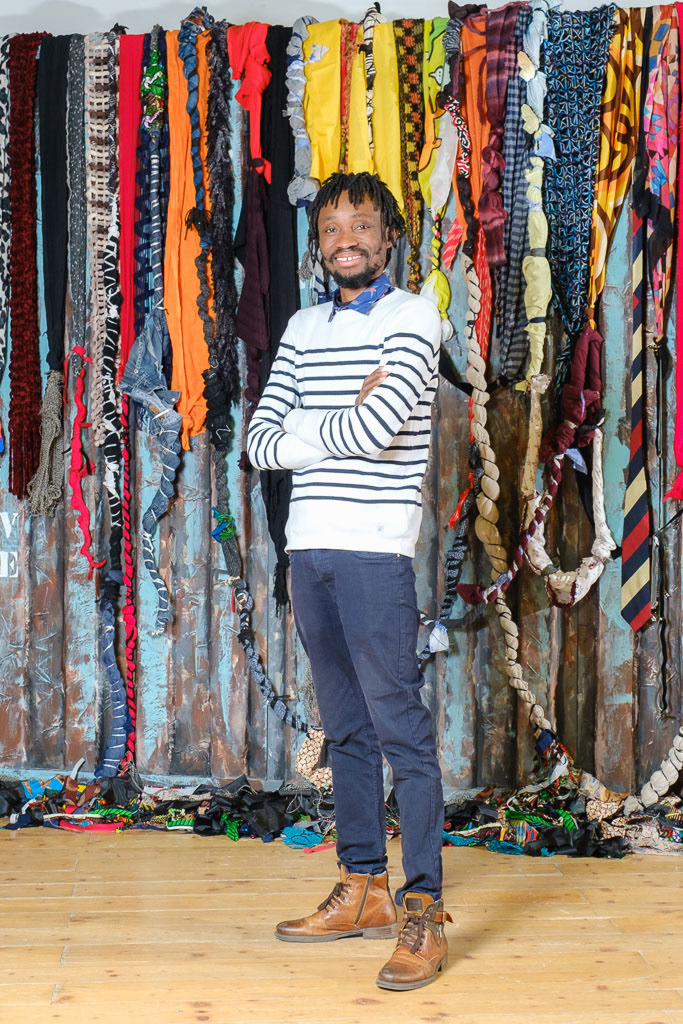
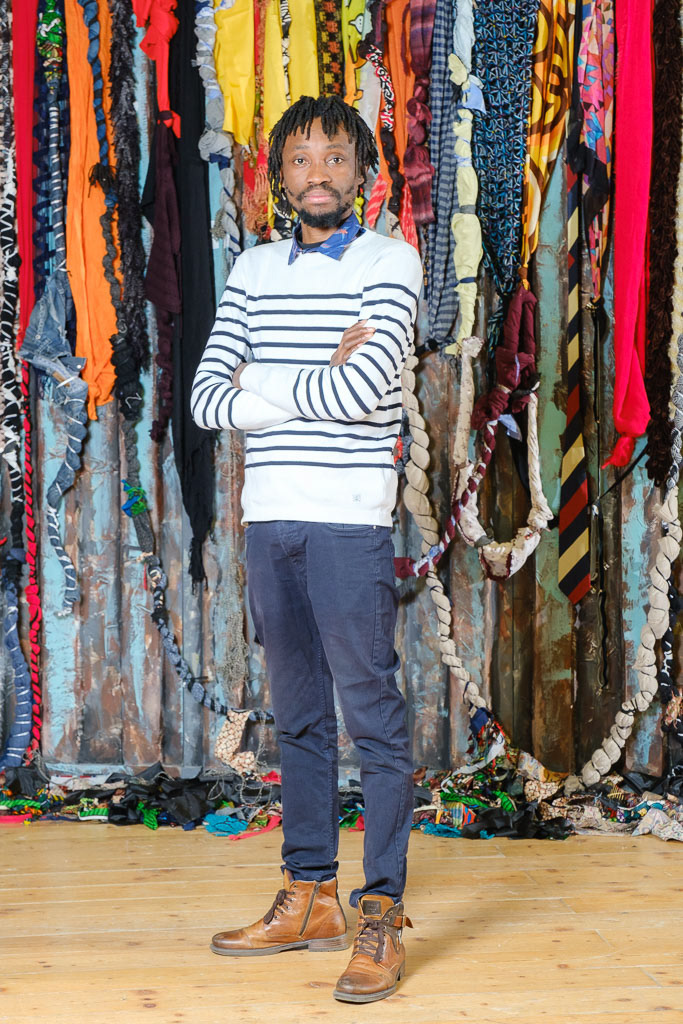
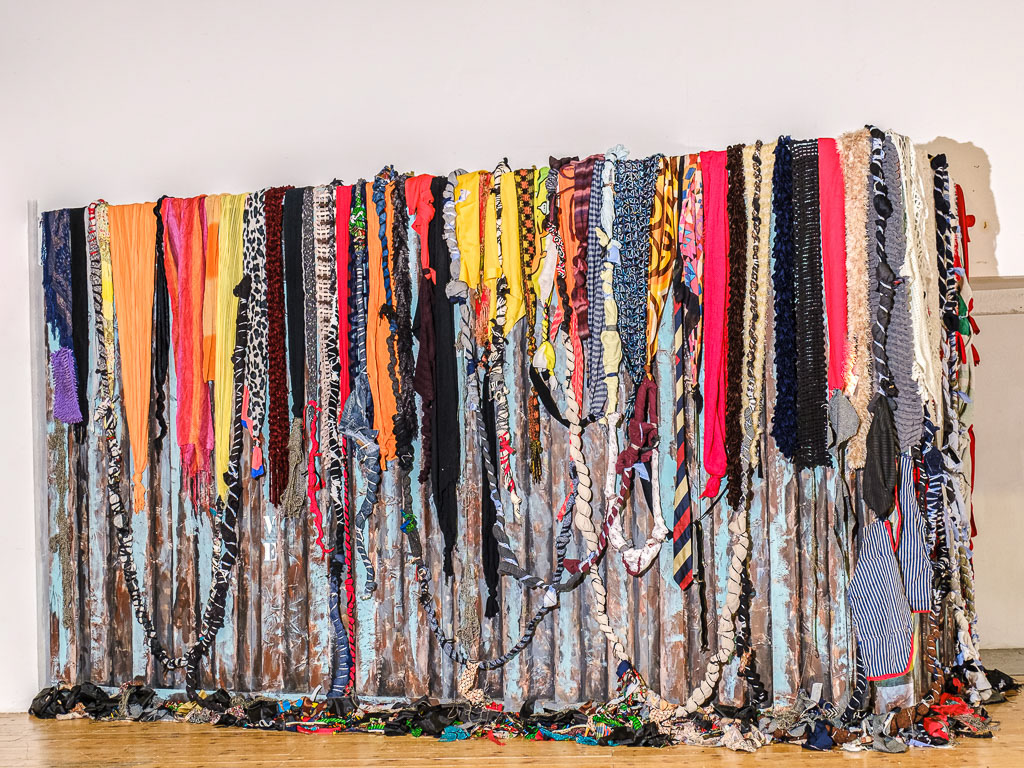
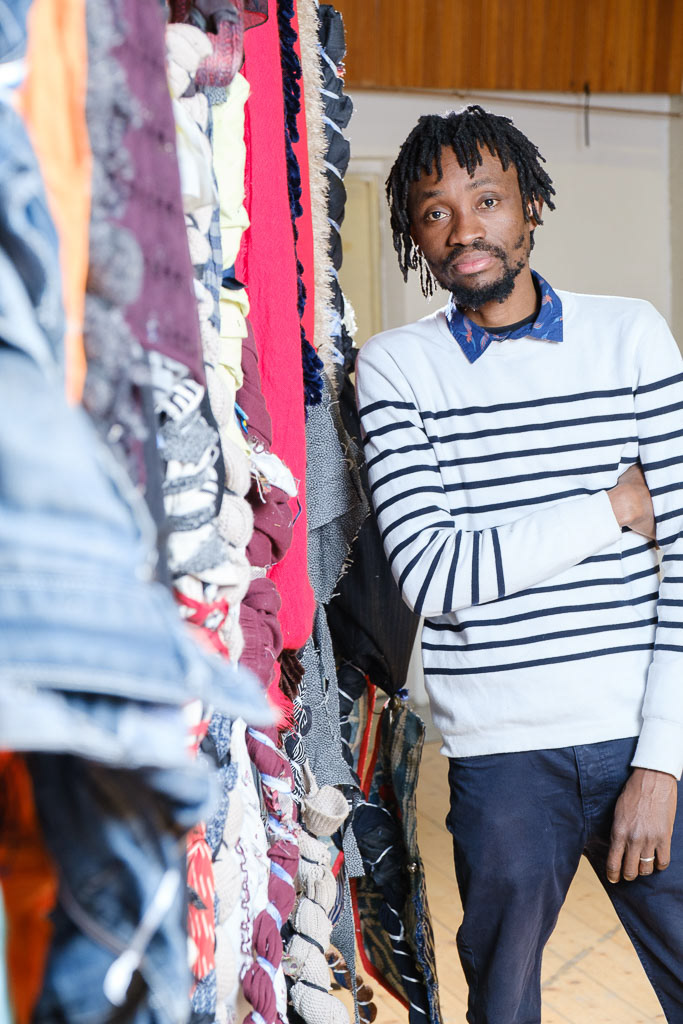
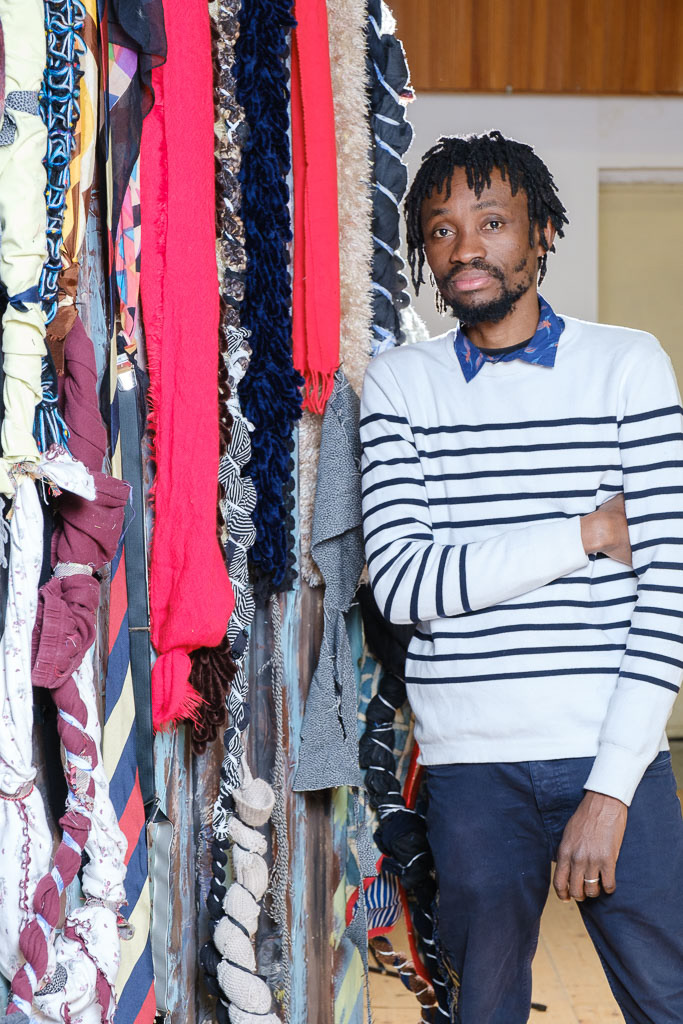
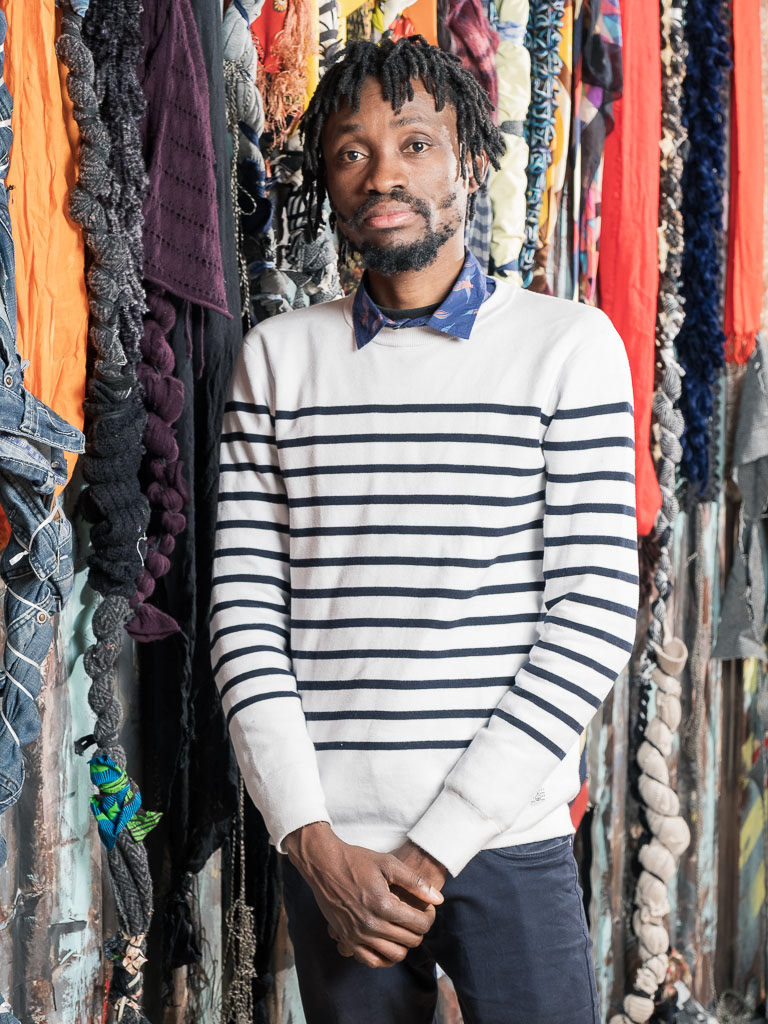
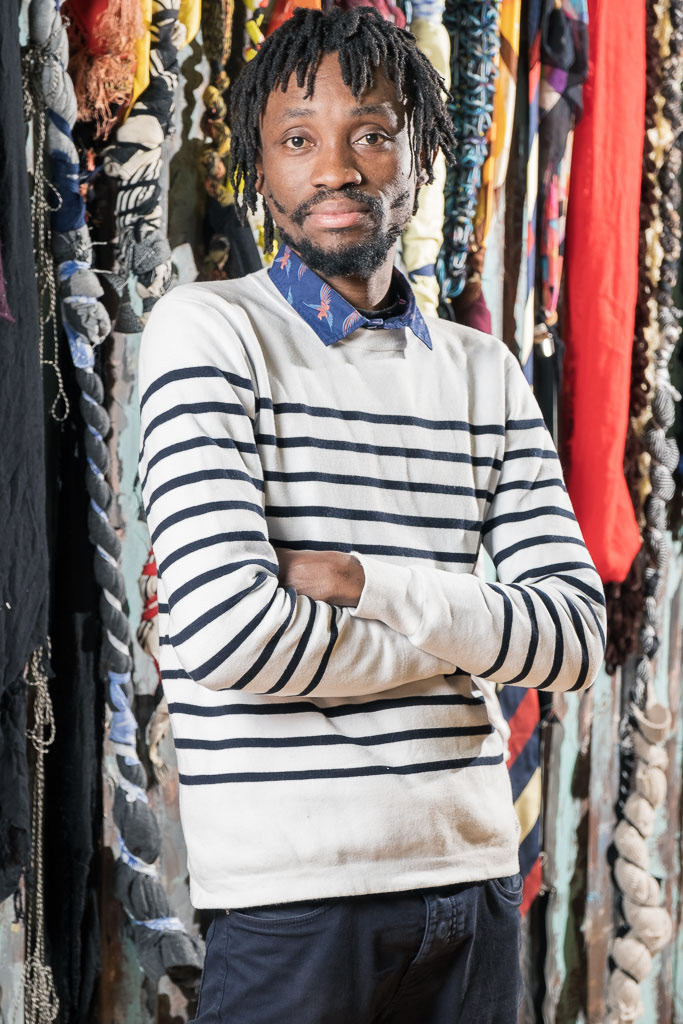
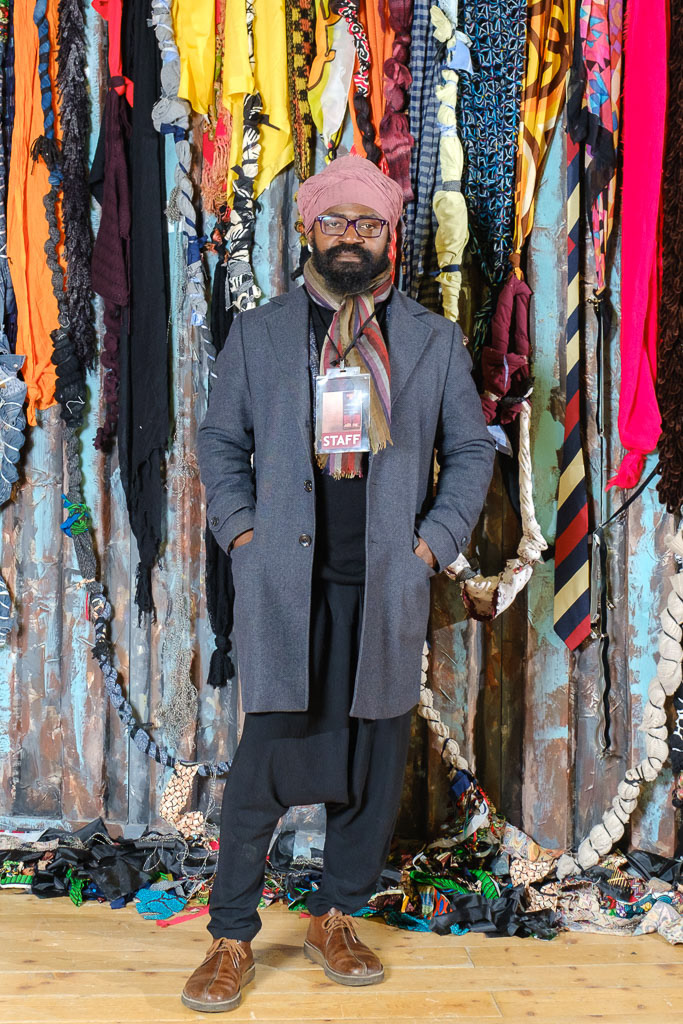
All photos © Lorenzo Piano


